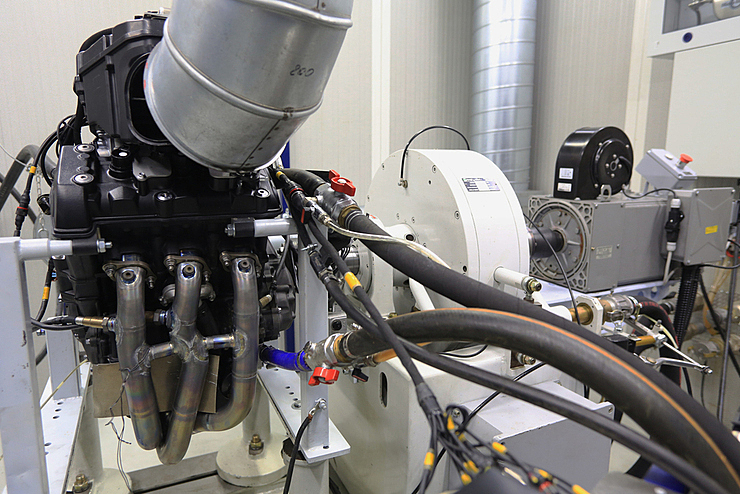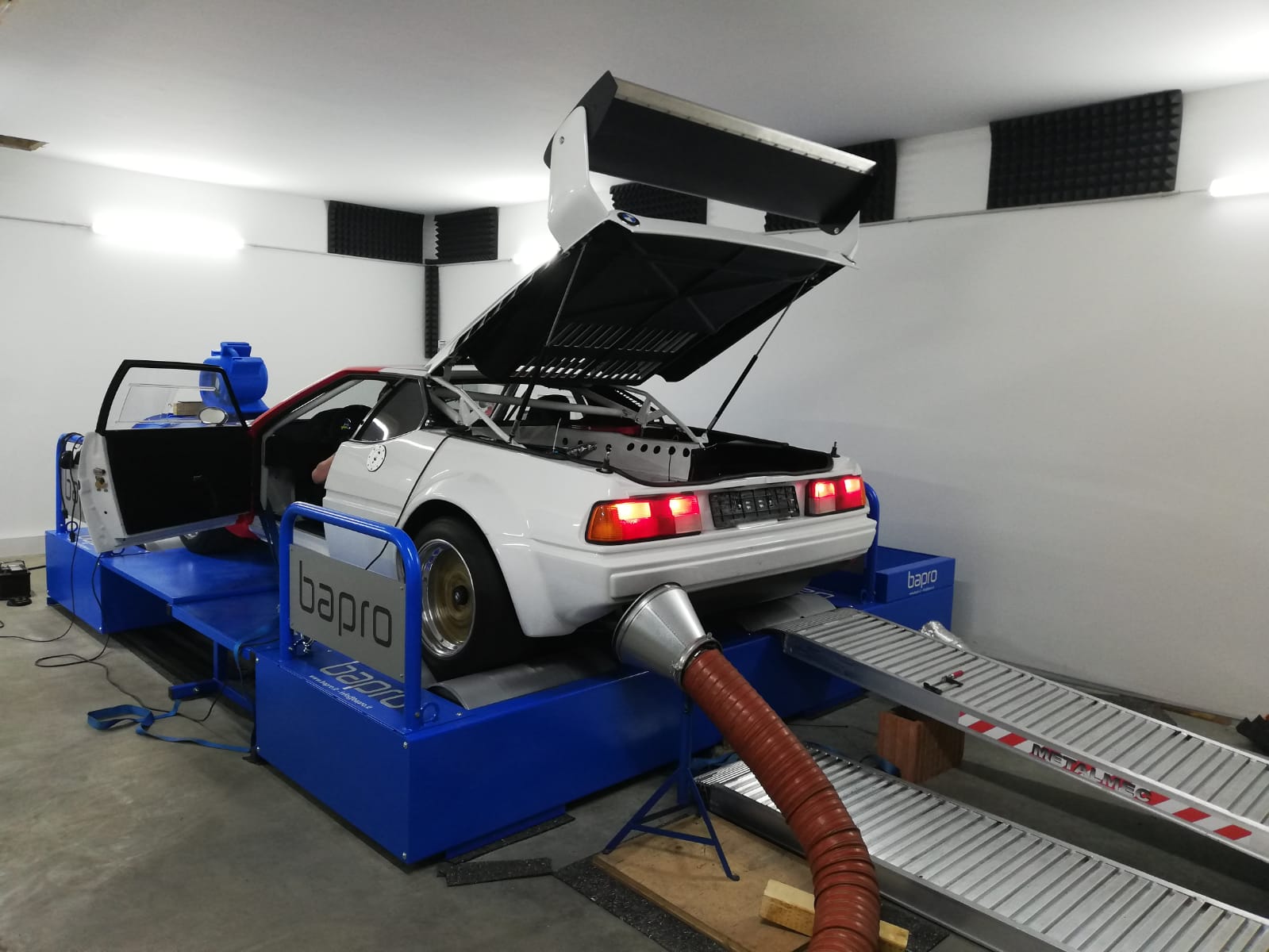Motorenprüfstand vs Rollenprüfstand
The engine dynamometers allows the measurement of the power and torque curves of an engine, which is installed and connected to the brake’s axis with which the dyno is equipped.
Therefore, through the resistant force applied by that brake, the power to the crankshaft is detected thanks to the measurement conducted by a load cell.

As an alternative tool to the engine dynamometer, there is a second type of power test bench: the roller chassis dynamometer.
The purpose remains the same, namely the detection of the engine performance parameters (torque and power delivered). What changes between the two types of power dyno is the way in which performance is measured.
In the first case it is in fact necessary to remove the engine from the vehicle and install it on the dyno, in the second this preliminary operation is not required.
It therefore appears clear that the great advantage of a roller chassis dynamometer is the greater ease and speed of performing the test.

The first generations of roller chassis dynamometers had the major disadvantage of only conducting inertial type measurements.
In other words, these dynamometers used the mass of the rollers (and therefore their inertia) as a measuring instrument.
In fact, not being equipped with a brake (instead present in the engine dynamometers as mentioned above) the inertial type dynos provided very approximate performance measurements, not very accurate and above all with poor repeatability.
All this made it almost impossible for the operators to make comparisons between the measurements carried out by an engine dyno and an inertial roller dyno.
Subsequent generations of roller chassis dynamometers have instead seen the introduction of an eddy current brake with load cell (it is a common retarder or magnetic brake), which has finally allowed these new benches to perform measurements almost with the same procedure as an engine dynamometer.
But not all braked type chassis dynamometers are the same.
Unfortunately, the old-concept braked chassis dynos only supply the power "at the wheel" of the vehicle under test, since they are not able to correctly measure the power "lost" due to frictions, inevitably present in the entire kinematic chain existing between the engine and dyno rollers.
Unfortunately, the wheel power figure is not reliable at all, nor repeatable over time, so useless.
See https://www.bapro.it/it/faq.
Furthermore, again, comparisons cannot be made with measurements performed by engine dynamometers.
Other braked dynos instead promise a measurement of the power to the crankshaft, but unfortunately they do nothing but estimate the power lost in frictions through not very clear algorithms.
There is only one way that can lead to the measurement of the power at the crankshaft by means of a roller braked chassis dynamometer, and it is the MEASUREMENT of the power lost in frictions too, and this is exactly what all the dynos in the product portfolio of Bapro Srl do.
We are therefore talking about latest generation roller braked chassis dynamometer, which therefore only perform braked (and not inertial) tests and which measure the power detected by the rollers together with the power lost in frictions, finally allowing to know the power at the engine’s crankshaft: the only reliable and repeatable data.
